
© Andy Ross. (Click image for larger version)
Scottish Ballet
Sinfonietta Giocosa, Motion of Displacement, Ten Poems
★★★★✰
New York, Joyce Theater
11 April 2017
www.scottishballet.co.uk
www.joyce.org
Scotch Symphony
The Scottish Ballet – or at least twelve of its dancers – is visiting New York for the first time this week. The company, led since 2012 by Christopher Hampson, is presenting a well-chosen mixed bill at the Joyce. Well chosen, because it actually manages to leave the audience with a strong impression of the company, as a group and as individuals, something few companies manage on their first visit. Two of the works are by Britons, well established in the UK but less known here, and one by a younger choreographer, Bryan Arias, a member of Crystal Pite’s Kidd Pivot. The impression is of a healthy, dynamic, versatile and exciting company well worth seeking out.

© Andy Ross. (Click image for larger version)
It’s particularly satisfying to see the company in Ten Poems, a suite of vignettes set to verses by Dylan Thomas, in an old recording by Richard Burton. The piece fits the company like a glove, even though it was made for Germany’s Ballet Kiel, in 2009. Thomas’s writing is famously musical, and Burton’s voice equally so, with great swooping melodious lines, strong rhythms, and alliterations that function like booming harmonies. Further, it evokes strong emotions and imagery, echoed by Christopher Bruce’s allusive choreography. A mention of farming in “Fern Hill” is shown by a dancer touching the floor, the “voices of all the drowned” from “Lie Still, Sleep Becalmed,” by a woman’s gaping mouth. The seven dancers are all people – lads, fishermen, a hunchback, disappointed matrons, dressed in drab, everyday clothes. (The work is performed off-pointe.) Jamiel Laurence, as the hunchback in “The Hunchback in the Park,” makes a strong impression, crouched, round-backed, snarling, and alone. As does the tall, stately Marge Hendrick, “straight as a young elm,” in “Lie Still, Becalmed,” with her great, deep pliés and wing-like arms. But then, so do the three lads in “I See the Boys of Summer” – Andrew Peasgood, Thomas, Edwards, and Christopher Harrison – as yet unbowed by life. In Thomas’s poems, youth, strength, love, the energy of life itself, decays and rots. The final image of the dance is a circle for the whole group, a dance of death or perhaps of eternal renewal. It must be said that Thomas’s poems are richer than the dances – fuller, more complex, deeper – but the choreography at least manages to capture some measure of their energy and emotional pitch, and makes one yearn to read these poems again.
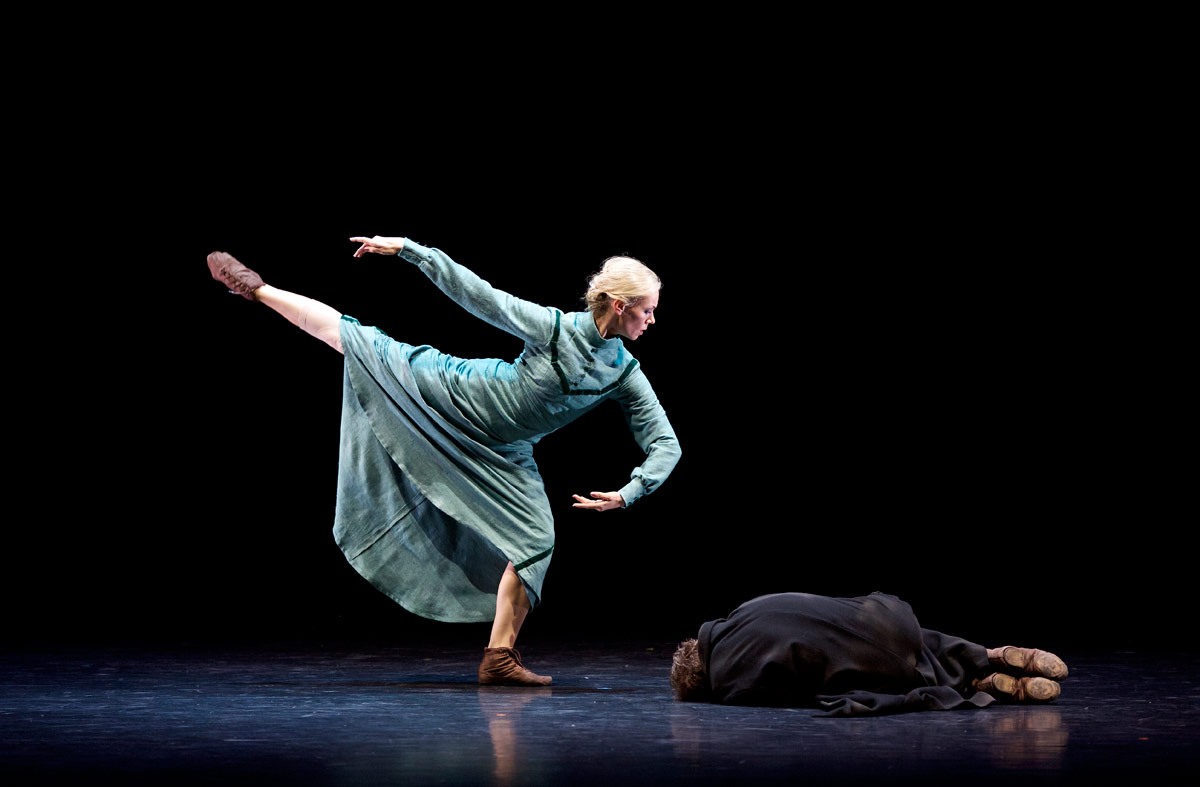
© Andy Ross. (Click image for larger version)
Ten Poems was the final work on a program that opened with Christopher Hampson’s Sinfonietta Giocosa (originally made for Atlanta Ballet), followed by Bryan Arias’s Motion of Displacement (created for the company in 2015). The Hampson is neoclassical, the Arias generically contemporary. In fact, Motions of Displacement is the least interesting item on the program, though it begins with a striking image of bodies entwined in a chain as in a bas relief by Rodin. However, it trades in too many self-conscious contemporary clichés – low lighting, unisex costuming, walls that rise and fall, lots of sliding around, the ubiquitous blank facial expression, a score fashioned out of bits and pieces of contemporary and Baroque music – to make much of an impact. Structurally, too, it is uninteresting: one solo of scrolling, whipping, folding movement after another, followed by a series of unaffecting pas de deux, too many of which include men flinging or kicking women’s limbs into place. The flinging doesn’t necessarily denote aggression, which is almost worse.

© Andy Ross. (Click image for larger version)
It’s easy to see why the company chose to open with Hampson’s Sinfonietta Giocosa, whose high-powered, virtuosic, clean, energetic movement shows the company at its most technically impressive. Much of the choreography is driven by lines, great powerful diagonals and verticals that cross, weave, and blast apart. The men fly across the stage in great leaps, arms open, palms facing out as if to push the air before them. The women, equally strong, move with style and brio, with clean and lively pointework. The partnering is swift and off-balance, with lots of tricky tosses and flips. It’s an exciting piece, if not particularly subtle one, set to three fast, driving movements from Bohuslav Martinu’s musical work of the same name.
As an opener, Sinfonietta Giocosa shows that these dancers mean business. The Scottish Ballet came ready to impress, and impress it did.







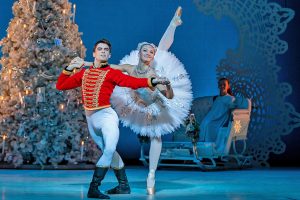
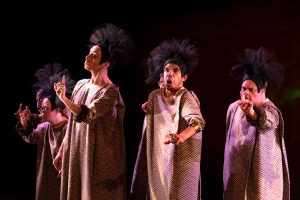


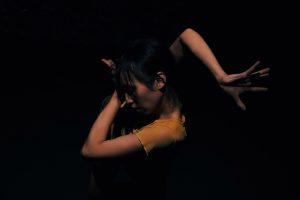

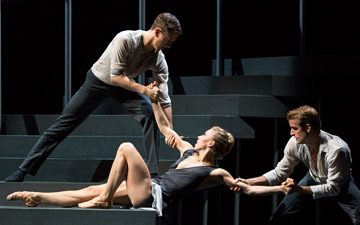

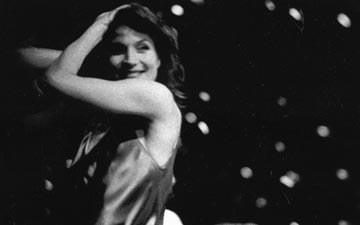
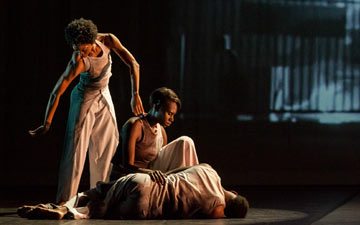
You must be logged in to post a comment.